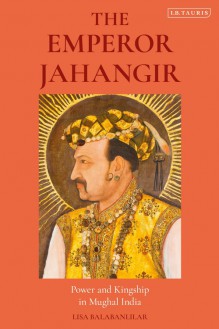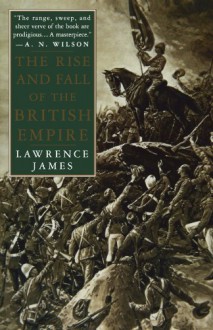



When I was growing up one of the board games I enjoyed playing most was Risk. Part of the game involved a deck of “territory cards” on which, in addition to the color-coded territories depicted on the map, there were silhouettes of Napoleonic-era soldiers and weapons depicting infantry, artillery, and cavalry. While the infantry and artillery were and still are relatable arms to people today, the cavalry seemed much more representative of the forces of a bygone era, with their role both esoteric and archaic.
Yet the cavalry remains a subject of great fascination for many. Among their number was Henry Paget, the seventh Marquess of Anglesey. The descendant of a cavalry commander who served during the Napoleonic wars, Anglesey spent over three decades writing a multi-volume history of the British cavalry from their heyday in the aftermath of the battle of Waterloo to their obsolescence a century later. It is a monumental work in the truest sense of the term, one that details an arm and the men who served in it.
The first volume of Anglesey’s work, which covers the three and a half decades following the Napoleonic wars, is a book of three parts. The first part is an extended prologue that traces the history of the British cavalry from its origins as an elite force of armored knights on horseback to their more specialized employment for reconnaissance and as a strike force in the early modern era. What emerges from these pages is the sense of constant evolution facing the cavalry, as they adjusted to the ever-shifting conditions of war in ways that maintained their usefulness in battle, albeit sometimes in very different roles.
After a chapter summarizing the post-Napoleonic reductions in the cavalry and their employment in domestic police work (a role which became increasingly obsolete with the development of a dedicated police force), Anglesey moves on to the second part of his book, which details the social history of the cavalry. Here he explains in more detail the different types of cavalry, their assigned functions, and the lives of the officers and men who served in their regiments. The life he describes was a hard one, made even more difficult by the penny-pinching of successive peacetime governments. Here he covers as well the composition of the Indian cavalry employed by the British, showing the increasingly imperial composition of the British forces during the era.
Having described the lives of the men who served in the cavalry, Anglesey then shifts his focus to describing the wars of the era in which they served. This forms the final part of his book, and offers a cavalry-centric account of over a half-dozen campaigns waged on the Indian subcontinent. Anglesey’s coverage here is very traditional, often adopting the perspective and tone of the accounts from the era. As with his earlier chapters he describes a service that remained wedded to Napoleonic tactics and methods of training, which while increasingly obsolescent still were adequate for the wars in which the cavalry were employed. As Anglesey concludes, it was only with the challenges that the cavalry would face in the 1850s, that the need for change became obvious.
By the end of the book Anglesey succeeds in demythologizing a force which is too often stereotyped by its caricatures. While somewhat limited in terms of its research and dated in its interpretations, it nonetheless stands as the indispensable starting point for anyone interested in learning about the British cavalry or the post-Napoleonic British army more generally. In terms of the depth of the author’s understanding and his passion for the topic, though, it is unlikely every to be surpassed.

Sandwiched as his reign was by those of his father Akbar and his son Shah Jahan and subsequently overshadowed as he was by his remarkable consort Nur Jahan, the Mughal emperor Jahangir has received short shrift in the historical memory. Lisa Balabanlilar’s book rectifies much of this by providing a clear and sympathetic account of Jahangir's life that, while acknowledging his flaws, rebuts many of the claims that contributed to his historical marginalization. Yet her book is more than just a biography of Jahangir, as she uses his life as a window into the Mughal emperorship at its peak, showing how it operates and expressed the power of its occupant. It makes for a book that is rewarding reading not just for those interested in Jahangir but anyone interested in learning about the Mughal empire and how it was ruled.

The largest empire in history ended less than a century ago, yet the legacy of how it rose and how it fell will impact the world for longer than it existed. Lawrence James’ chronicles the 400-year long history of The Rise and Fall of the British Empire, from its begins on the eastern seaboard of North American spanning a quarter of the world to the collection of tiny outposts scattered across the globe.
Neither a simple nor a comprehensive history, James looks at the British Empire in the vain of economic, martial, political, and cultural elements not only in Britain but in the colonies as well. Beginning with the various settlements on the eastern seaboard of North America, James describes the various colonies and latter colonial administrators that made their way from Britain to locations around the globe which would have an impact on attitudes of the Empire over the centuries. The role of economics in not only the growth the empire but also the Royal Navy that quickly became interdependent and along with the growth of the Empire’s size the same with the nation’s prestige. The lessons of the American War of Independence not only in terms of military fragility, but also politically influenced how Britain developed the “white” dominions over the coming centuries. And the effect of the liberal, moralistic bent of the Empire to paternally watch over “lesser” peoples and teach them clashing with the bombast of the late-19th Century rush of imperialism in the last century of the Empire’s exists and its effects both at home and abroad.
Composing an overview of 400-years of history than spans across the globe and noting the effects on not only Britain but the territories it once controlled was no easy task, especially in roughly 630 pages of text. James attempted to balance the “positive” and “negative” historiography of the Empire while also adding to it. The contrast between upper-and upper-middle class Britons thinking of the Empire with that of the working-class Britons and colonial subjects was one of the most interesting narratives that James brought to the book especially in the twilight years of the Empire. Although it is hard to fault James given the vast swath of history he tackled there were some mythical history elements in his relating of the American War of Independence that makes the more critical reader take pause on if the related histories of India, South Africa, Egypt, and others do not contain similar historical myths.
The Rise and Fall of the British Empire is neither a multi-volume comprehensive history nor a simple history that deals with popular myths of history, it is an overview of how an island nation came to govern over a quarter of the globe through cultural, economic, martial, and political developments. Lawrence James’s book is readable to both general and critical history readers and highly recommended.